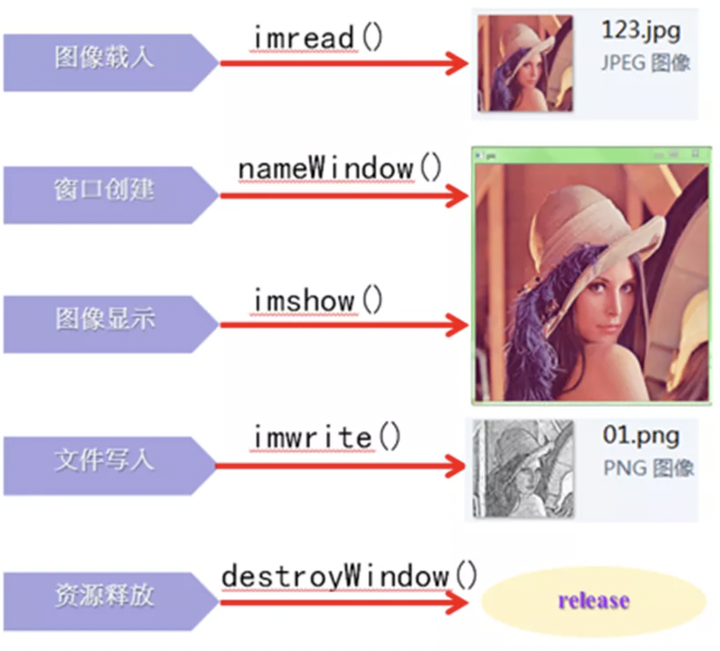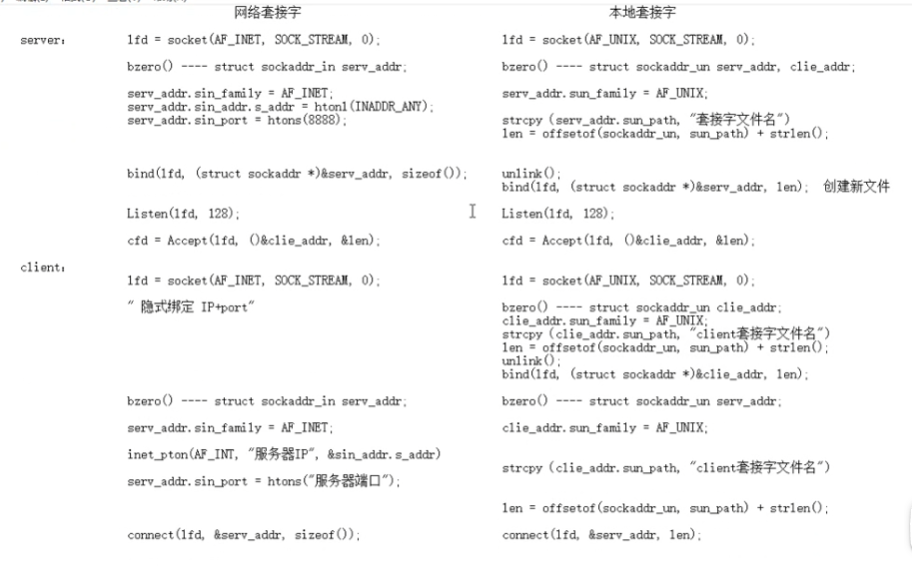1 首先qt 已经封装了opengl,那么我们就可以直接用了,这里面有三个函数需要继承
virtual void initializeGL() override;
virtual void resizeGL(int w,int h) override;
virtual void paintGL() override;这三个函数是实现opengl的重要函数。
2 我们需要写GLSL语句
static const char *vertexShaderSource =
"#version 330\n"
"layout (location = 0) in vec3 aPos;\n" // 位置变量的属性位置值为0
"layout (location = 1) in vec3 aColor;\n" // 颜色变量的属性位置值为1
"layout (location = 2) in vec2 aTexCoord;\n" //纹理变量的属性位置值为2
"out vec3 ourColor;\n" // 为片段着色器指定一个颜色输出
"out vec2 TexCoord;\n" // 为片段着色器指定一个纹理输出
"void main(){\n"
"gl_Position = vec4(aPos, 1.0);\n" //顶点信息为4个值向量 // 注意我们如何把一个vec3作为vec4的构造器的参数
"ourColor = aColor;\n" // 输出颜色变量==输入颜色
"TexCoord = aTexCoord;\n" // 输出纹理变量==输入纹理
"}\n";
static const char *fragmentShaderSource =
"#version 330\n"
"out vec4 FragColor;\n" //输出颜色
"in vec3 ourColor;\n" //输入的颜色== vertexShaderSource(这里面的输入颜色)
"in vec2 TexCoord;\n" //输入的纹理== vertexShaderSource(这里面的输入纹理)
"uniform sampler2D texture1;\n" //得到输入的纹理
"void main()"
"{\n"
"FragColor = texture(texture1, TexCoord);\n"
"}\n";上面的语句不懂的可以查询,或者私信问我。
3 我们设置点顶点,颜色和纹理
float vertices[] = {
// 位置 // 颜色 //纹理
// positions // colors // texture coords
0.5f, 0.5f, 0.0f, 1.0f, 0.0f, 0.0f, 1.0f, 1.0f, // top right
0.5f, -0.5f, 0.0f, 0.0f, 1.0f, 0.0f, 1.0f, 0.0f, // bottom right
-0.5f, -0.5f, 0.0f, 0.0f, 0.0f, 1.0f, 0.0f, 0.0f, // bottom left
-0.5f, 0.5f, 0.0f, 1.0f, 1.0f, 0.0f, 0.0f, 1.0f // top left
}; 这里面位置颜色是什么意思呢,举例

图1
第一行位置: 0.5f, 0.5f, 0.0f 这是以窗口中心为0,0点,所绘制的图形在紫色位置,-x ==-1, x ==1, -y ==-1, y==1。点在一半的位置
第一行颜色:1.0f, 0.0f, 0.0f ,意思是RGB,只显示红色。
第一行纹理:1.0f, 1.0f 是什么意思呢,看下面图说明

图2

图3
第一个图是位置,第二个是纹理,纹理坐标和顶点坐标大不相同,它的中心点(0,0)位于纹理图案的左下角,所以它的范围是(0-1)的,这里会取1,是因为希望得到完整的图案,取0.5也可以,最终结果的图案为原图长的一半,宽的一半。
到此我们在看图1 里面的紫色的点的纹理是什么呢?是不是就是1,1点呢??答案是的。
4 我们开始一步步写三角形,先写三个
void myGlWidget::initializeGL()
{
// 为当前环境初始化OpenGL函数
initializeOpenGLFunctions();
glClearColor(1.0f, 1.0f, 1.0f, 1.0f); //设置背景色为白色
//初始化纹理对象
m_texture = new QOpenGLTexture(QOpenGLTexture::Target2D);
m_texture->setData(QImage(":/cube1.png").mirrored()); //加载砖块图片
m_texture->setMinMagFilters(QOpenGLTexture::LinearMipMapLinear,QOpenGLTexture::Nearest);
//设置缩小和放大的方式,缩小图片采用LinearMipMapLinear线性过滤,并使用多级渐远纹理邻近过滤,放大图片采用:Nearest邻近过滤
m_texture->setWrapMode(QOpenGLTexture::DirectionS,QOpenGLTexture::Repeat);
m_texture->setWrapMode(QOpenGLTexture::DirectionT,QOpenGLTexture::Repeat);
//m_texture->allocateStorage();
//创建着色器程序
program = new QOpenGLShaderProgram;
program->addShaderFromSourceCode(QOpenGLShader::Vertex,vertexShaderSource);
program->addShaderFromSourceCode(QOpenGLShader::Fragment,fragmentShaderSource);
program->link();
program->bind();//激活Program对象
//初始化VBO,将顶点数据存储到buffer中,等待VAO激活后才能释放
// float vertices[] = {
// // 位置 // 颜色 //纹理
// // positions // colors // texture coords
// 0.5f, 0.5f, 0.0f, 1.0f, 0.0f, 0.0f, 1.0f, 1.0f, // top right
// 0.5f, -0.5f, 0.0f, 0.0f, 1.0f, 0.0f, 1.0f, 0.0f, // bottom right
// -0.5f, -0.5f, 0.0f, 0.0f, 0.0f, 1.0f, 0.0f, 0.0f, // bottom left
// -0.5f, 0.5f, 0.0f, 1.0f, 1.0f, 0.0f, 0.0f, 1.0f // top left
// };
float vertices[] = {
// ---- 位置 ---- ---- 颜色 ---- - 纹理坐标 -
-1.0f, -1.0f, 1.0f, 1.0f, 0.0f, 0.0f, 0.0f, 1.0f, // 右上
1.0f, -1.0f, 1.0f, 0.0f, 1.0f, 0.0f, 1.0f, 1.0f, // 右下
-1.0f, 1.0f, 1.0f, 0.0f, 0.0f, 1.0f, 0.0f, 0.0f, // 左下
1.0f, 1.0f, 1.0f, 1.0f, 1.0f, 0.0f, 1.0f, 0.0f // 左上
};
vbo.create();
vbo.bind(); //绑定到当前的OpenGL上下文,
vbo.allocate(vertices, sizeof(vertices));
vbo.setUsagePattern(QOpenGLBuffer::StaticDraw); //设置为一次修改,多次使用
//初始化VAO,设置顶点数据状态(顶点,法线,纹理坐标等)
vao.create();
vao.bind();
// void setAttributeBuffer(int location, GLenum type, int offset, int tupleSize, int stride = 0);
program->setAttributeBuffer(0, GL_FLOAT, 0, 3, 8 * sizeof(float)); //设置aPos顶点属性
program->setAttributeBuffer(1, GL_FLOAT, 3 * sizeof(float), 3, 8 * sizeof(float)); //设置aColor顶点颜色
program->setAttributeBuffer(2, GL_FLOAT, 6 * sizeof(float), 2, 8 * sizeof(float)); //设置aColor顶点颜色
//offset:第一个数据的偏移量
//tupleSize:一个数据有多少个元素,比如位置为xyz,颜色为rgb,所以是3
//stride:步长,下个数据距离当前数据的之间距离,比如右下位置和左下位置之间间隔了:3个xyz值+3个rgb值,所以填入 6 * sizeof(float)
program->enableAttributeArray(0); //使能aPos顶点属性
program->enableAttributeArray(1); //使能aColor顶点颜色
program->enableAttributeArray(2); //使能顶点纹理
//解绑所有对象
//vao.release();
//vbo.release();
}void myGlWidget::resizeGL(int w, int h)
{
this->glViewport(0,0,w,h); //定义视口区域
}
void myGlWidget::paintGL()
{
this->glClearColor(0.1f,0.5f,0.7f,1.0f); //设置清屏颜色
this->glClear(GL_COLOR_BUFFER_BIT);
// 渲染Shader
//vao.bind();
//m_texture->bind();
program->setUniformValue("texture1", 0);
m_texture->bind(0);
//glDrawElements(GL_TRIANGLES, 4, GL_UNSIGNED_INT, 0);
glDrawArrays(GL_TRIANGLE_STRIP, 0, 4);//绘制纹理 //绘制3个定点,样式为三角形
}这样我们就绘制了一个带纹理的图形
5 那如果我们想旋转怎么做呢?
我们修改下glsl语句,这里我们增加一个矩阵
static const char *vertexShaderSource =
"#version 330\n"
"layout (location = 0) in vec3 aPos;\n" // 位置变量的属性位置值为0
"layout (location = 1) in vec3 aColor;\n" // 颜色变量的属性位置值为1
"layout (location = 2) in vec2 aTexCoord;\n" //纹理变量的属性位置值为2
"out vec3 ourColor;\n" // 为片段着色器指定一个颜色输出
"out vec2 TexCoord;\n" // 为片段着色器指定一个纹理输出
"uniform mat4 transform;\n"
"void main(){\n"
"gl_Position = transform * vec4(aPos, 1.0);\n" //顶点信息为4个值向量 // 注意我们如何把一个vec3作为vec4的构造器的参数
"ourColor = aColor;\n" // 输出颜色变量==输入颜色
"TexCoord = aTexCoord;\n" // 输出纹理变量==输入纹理
"}\n";我们在修改响应的代码
void myGlWidget::paintGL()
{
this->glClearColor(0.1f,0.5f,0.7f,1.0f); //设置清屏颜色
this->glClear(GL_COLOR_BUFFER_BIT);
QMatrix4x4 matrix;
matrix.setToIdentity();
matrix.translate(0.4f,0.0,0.0);
matrix.rotate(45,0,0,1);
matrix.scale(0.5);
// 渲染Shader
//vao.bind();
//m_texture->bind();
program->setUniformValue("texture1", 0);
m_texture->bind(0);
program->setUniformValue("transform", matrix);
//glDrawElements(GL_TRIANGLES, 4, GL_UNSIGNED_INT, 0);
glDrawArrays(GL_TRIANGLE_STRIP, 0, 4);//绘制纹理 //绘制3个定点,样式为三角形
}这样我们纹理图就旋转了45°。
6 如果我们想绘制一个回合贴图需要怎么做呢?
我们继续修改glsl语句
static const char *vertexShaderSource =
"#version 330\n"
"layout (location = 0) in vec3 aPos;\n" // 位置变量的属性位置值为0
"layout (location = 1) in vec3 aColor;\n" // 颜色变量的属性位置值为1
"layout (location = 2) in vec2 aTexCoord;\n" //纹理变量的属性位置值为2
"out vec3 ourColor;\n" // 为片段着色器指定一个颜色输出
"out vec2 TexCoord;\n" // 为片段着色器指定一个纹理输出
"uniform mat4 transform;\n"
"void main(){\n"
"gl_Position = transform * vec4(aPos, 1.0);\n" //顶点信息为4个值向量 // 注意我们如何把一个vec3作为vec4的构造器的参数
"ourColor = aColor;\n" // 输出颜色变量==输入颜色
"TexCoord = aTexCoord;\n" // 输出纹理变量==输入纹理
"}\n";
static const char *fragmentShaderSource =
"#version 330\n"
"out vec4 FragColor;\n" //输出颜色
"in vec3 ourColor;\n" //输入的颜色== vertexShaderSource(这里面的输入颜色)
"in vec2 TexCoord;\n" //输入的纹理== vertexShaderSource(这里面的输入纹理)
"uniform sampler2D texture1;\n" //得到输入的纹理
"uniform sampler2D texture2;\n" //得到输入的纹理
"void main()"
"{\n"
"FragColor = mix(texture(texture1, TexCoord), texture(texture2, TexCoord), 0.7)* vec4(ourColor, 1.0);\n"
"}\n";修改对应的代码
static const char *vertexShaderSource =
"#version 330\n"
"layout (location = 0) in vec3 aPos;\n" // 位置变量的属性位置值为0
"layout (location = 1) in vec3 aColor;\n" // 颜色变量的属性位置值为1
"layout (location = 2) in vec2 aTexCoord;\n" //纹理变量的属性位置值为2
"out vec3 ourColor;\n" // 为片段着色器指定一个颜色输出
"out vec2 TexCoord;\n" // 为片段着色器指定一个纹理输出
"uniform mat4 transform;\n"
"void main(){\n"
"gl_Position = transform * vec4(aPos, 1.0);\n" //顶点信息为4个值向量 // 注意我们如何把一个vec3作为vec4的构造器的参数
"ourColor = aColor;\n" // 输出颜色变量==输入颜色
"TexCoord = aTexCoord;\n" // 输出纹理变量==输入纹理
"}\n";
static const char *fragmentShaderSource =
"#version 330\n"
"out vec4 FragColor;\n" //输出颜色
"in vec3 ourColor;\n" //输入的颜色== vertexShaderSource(这里面的输入颜色)
"in vec2 TexCoord;\n" //输入的纹理== vertexShaderSource(这里面的输入纹理)
"uniform sampler2D texture1;\n" //得到输入的纹理
"uniform sampler2D texture2;\n" //得到输入的纹理
"void main()"
"{\n"
"FragColor = mix(texture(texture1, TexCoord), texture(texture2, TexCoord), 0.7)* vec4(ourColor, 1.0);\n"
"}\n";
myGlWidget::myGlWidget(QWidget *parent):QOpenGLWidget(parent)
, m_ebo(QOpenGLBuffer::IndexBuffer)
, vbo(QOpenGLBuffer::VertexBuffer)
{
}
myGlWidget::~myGlWidget()
{
}
void myGlWidget::resizeGL(int w, int h)
{
this->glViewport(0,0,w,h); //定义视口区域
}
void myGlWidget::paintGL()
{
this->glClearColor(0.1f,0.5f,0.7f,1.0f); //设置清屏颜色
this->glClear(GL_COLOR_BUFFER_BIT);
QMatrix4x4 matrix;
matrix.setToIdentity();
matrix.translate(0.4f,0.0,0.0);
matrix.rotate(45,0,0,1);
matrix.scale(0.5);
// 渲染Shader
//vao.bind();
//m_texture->bind();
program->setUniformValue("texture1", 0);
m_texture->bind(0);
program->setUniformValue("texture2", 1);
m_texture2->bind(1);
program->setUniformValue("transform", matrix);
//glDrawElements(GL_TRIANGLES, 4, GL_UNSIGNED_INT, 0);
glDrawArrays(GL_TRIANGLE_STRIP, 0, 4);//绘制纹理 //绘制3个定点,样式为三角形
}
void myGlWidget::initializeGL()
{
// 为当前环境初始化OpenGL函数
initializeOpenGLFunctions();
glClearColor(1.0f, 1.0f, 1.0f, 1.0f); //设置背景色为白色
//初始化纹理对象
m_texture = new QOpenGLTexture(QOpenGLTexture::Target2D);
m_texture->setData(QImage(":/cube1.png").mirrored()); //加载砖块图片
m_texture->setMinMagFilters(QOpenGLTexture::LinearMipMapLinear,QOpenGLTexture::Nearest);
//设置缩小和放大的方式,缩小图片采用LinearMipMapLinear线性过滤,并使用多级渐远纹理邻近过滤,放大图片采用:Nearest邻近过滤
m_texture->setWrapMode(QOpenGLTexture::DirectionS,QOpenGLTexture::Repeat);
m_texture->setWrapMode(QOpenGLTexture::DirectionT,QOpenGLTexture::Repeat);
//m_texture->allocateStorage();
// //初始化纹理对象
m_texture2 = new QOpenGLTexture(QOpenGLTexture::Target2D);
m_texture2->setData(QImage(":/0.png").mirrored()); //返回图片的镜像,设置为Y轴反向,因为在opengl的Y坐标中,0.0对应的是图片底部
m_texture2->setMinMagFilters(QOpenGLTexture::LinearMipMapLinear,QOpenGLTexture::Nearest);
//设置缩小和放大的方式,缩小图片采用LinearMipMapLinear线性过滤,并使用多级渐远纹理邻近过滤,放大图片采用:Nearest邻近过滤
m_texture2->setWrapMode(QOpenGLTexture::DirectionS,QOpenGLTexture::Repeat);
m_texture2->setWrapMode(QOpenGLTexture::DirectionT,QOpenGLTexture::Repeat);
//m_texture2->allocateStorage();
//创建着色器程序
program = new QOpenGLShaderProgram;
program->addShaderFromSourceCode(QOpenGLShader::Vertex,vertexShaderSource);
program->addShaderFromSourceCode(QOpenGLShader::Fragment,fragmentShaderSource);
program->link();
program->bind();//激活Program对象
//初始化VBO,将顶点数据存储到buffer中,等待VAO激活后才能释放
// float vertices[] = {
// // 位置 // 颜色 //纹理
// // positions // colors // texture coords
// 0.5f, 0.5f, 0.0f, 1.0f, 0.0f, 0.0f, 1.0f, 1.0f, // top right
// 0.5f, -0.5f, 0.0f, 0.0f, 1.0f, 0.0f, 1.0f, 0.0f, // bottom right
// -0.5f, -0.5f, 0.0f, 0.0f, 0.0f, 1.0f, 0.0f, 0.0f, // bottom left
// -0.5f, 0.5f, 0.0f, 1.0f, 1.0f, 0.0f, 0.0f, 1.0f // top left
// };
float vertices[] = {
// ---- 位置 ---- ---- 颜色 ---- - 纹理坐标 -
-1.0f, -1.0f, 1.0f, 1.0f, 0.0f, 0.0f, 0.0f, 1.0f, // 右上
1.0f, -1.0f, 1.0f, 0.0f, 1.0f, 0.0f, 1.0f, 1.0f, // 右下
-1.0f, 1.0f, 1.0f, 0.0f, 0.0f, 1.0f, 0.0f, 0.0f, // 左下
1.0f, 1.0f, 1.0f, 1.0f, 1.0f, 0.0f, 1.0f, 0.0f // 左上
};
vbo.create();
vbo.bind(); //绑定到当前的OpenGL上下文,
vbo.allocate(vertices, sizeof(vertices));
vbo.setUsagePattern(QOpenGLBuffer::StaticDraw); //设置为一次修改,多次使用
//初始化VAO,设置顶点数据状态(顶点,法线,纹理坐标等)
vao.create();
vao.bind();
// void setAttributeBuffer(int location, GLenum type, int offset, int tupleSize, int stride = 0);
program->setAttributeBuffer(0, GL_FLOAT, 0, 3, 8 * sizeof(float)); //设置aPos顶点属性
program->setAttributeBuffer(1, GL_FLOAT, 3 * sizeof(float), 3, 8 * sizeof(float)); //设置aColor顶点颜色
program->setAttributeBuffer(2, GL_FLOAT, 6 * sizeof(float), 2, 8 * sizeof(float)); //设置aColor顶点颜色
//offset:第一个数据的偏移量
//tupleSize:一个数据有多少个元素,比如位置为xyz,颜色为rgb,所以是3
//stride:步长,下个数据距离当前数据的之间距离,比如右下位置和左下位置之间间隔了:3个xyz值+3个rgb值,所以填入 6 * sizeof(float)
program->enableAttributeArray(0); //使能aPos顶点属性
program->enableAttributeArray(1); //使能aColor顶点颜色
program->enableAttributeArray(2); //使能aColor顶点颜色
//解绑所有对象
//vao.release();
//vbo.release();
}这样我们就可以看到两个混合的贴图。



















